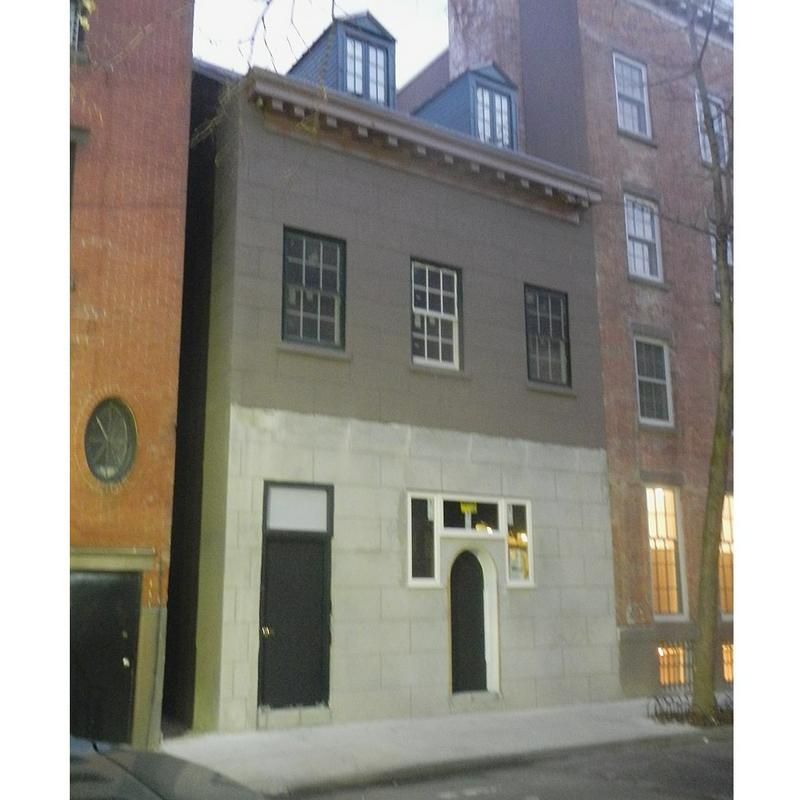Chumley’s: The Speakeasy For The Literary Crowd
By Linda Speckhals | December 28, 2022

Prohibition took effect on January 17, 1920, which meant that if you wanted to drink, you had to obtain your alcohol from druggists for “medicinal” purposes or clergymen for “religious” purposes. Of course, there were other options: you could get your booze from bootleggers, or go to one of the unlicensed barrooms, known as “speakeasies.” To gain admission, you had to quietly speak a password so that law enforcement couldn’t hear you.
Before It Was Chumley's
One of the most famous speakeasies was Chumley’s at 86 Barrow Street in Greenwich Village, a location that Leland Stanford Chumley transformed when he recognized that “the obscure three-story structure” was the perfect spot to open a speakeasy in 1922. The building that housed Chumley’s was constructed in 1831, getting its start as a blacksmith’s shop and a stable, but there were also rumors that it may have housed runaway slaves in antebellum America.

The Owner Was A Wobbly
Chumley, who had held a number of jobs, from waiter to editorial writer and cartoonist to painter, was an active member of the socialist group, the Industrial Workers of the World (IWW), also known as the Wobblies. He found that the building was a good place for the Wobblies to hold their meetings. In the women’s room, there was a one-person dumbwaiter that could take people upstairs to the second floor for secret meetings, or if they needed to hide from the Bomb Squad.
Keeping Things Hidden
Chumley’s main entrance was 86 Bedford Street, which opened to the sidewalk but was unmarked except with the number 86. A second secret entrance (also unmarked) was at 58 Barrow Street, which was accessed through Pamela Court. Supposedly, there may have been a third entrance through a tunnel connected to a neighboring home. People entered through the back entrance, but there was also a secret exit behind a bookcase, as well as a trap door. These features made it easy to hide the alcohol and for the patrons to make a quick getaway during Prohibition raids. Allegedly, prior to Prohibition raids, the police would call ahead to warn the bartender to “86” all the patrons, essentially sending them out through the Bedford Street exit as the raid would start when they entered via the Pamela Court entrance, which was the technical address of Chumley’s. And yes, that is possibly the origin of the phrase "to 86 someone" or something.

Alcohol Was Served In Teacups
Although Chumley’s was a bar, it operated as a teahouse; for example, if a patron ordered English tea, they would get gin served in a teacup, while an order of Tennessee tea meant Jack Daniels in a teacup. It quietly transitioned into a literary speakeasy when the poet Edna St. Vincent Millay, who lived nearby and who occasionally served as a bartender there, started to attract other literary figures. Some of the regulars included F. Scott Fitzgerald (who had a favorite table at the speakeasy, table number 26), John Steinbeck, and Ernest Hemingway. Chumley honored their patronage, hanging up the portraits of the writers who haunted the speakeasy, as well as the dust jackets of their books; this tradition continued throughout Chumley’s existence. Chumley’s lasted until 2007, as the old speakeasy lived on as a dive bar, outlasting the end of Prohibition, and outlasting the death of Chumley in 1935. His wife, Henrietta ran the bar for 25 years, during which time the Beat writers met up there.
Chumley's Reimagined
In 2007, a chimney accident caused structural damage, and the bar had to be rebuilt, undergoing an extensive renovation. When it reopened in 2016, it had been reimagined by Alessandro Borgognone, who transformed it into an expensive restaurant serving cocktails that were a nod to the early days, with names like Basement of Thieves and Mr. Easy. They also tried to create an atmosphere that was a nostalgic throwback to the Prohibition era, although they did keep the pictures of the famous patrons and the dust jackets that originally adorned the walls. In another nod to the bar’s origins, once you passed through the unmarked entrance, you could sip a cocktail out of a teacup. Unfortunately, Chumley’s closed its doors for good in 2020.